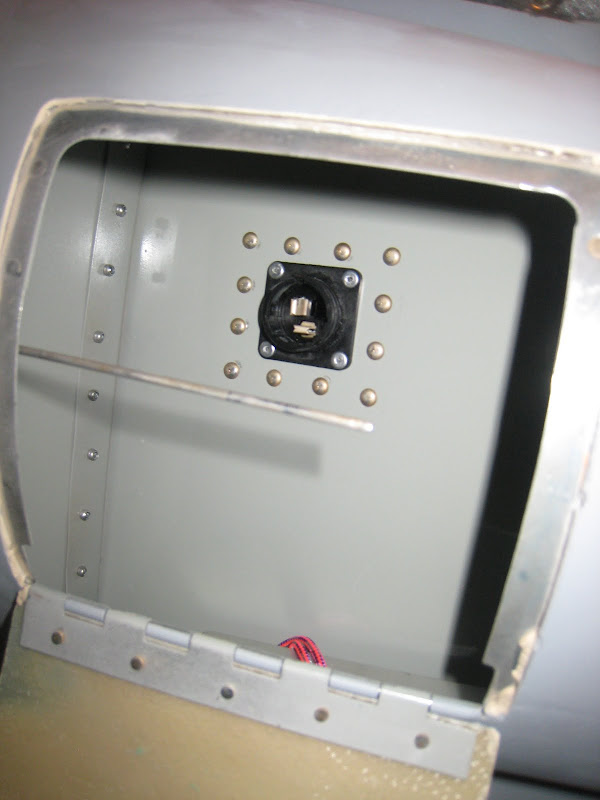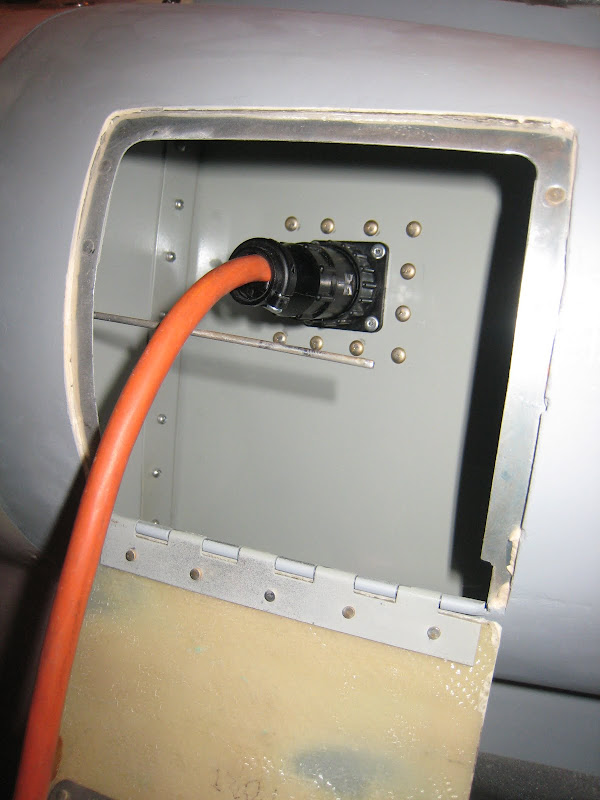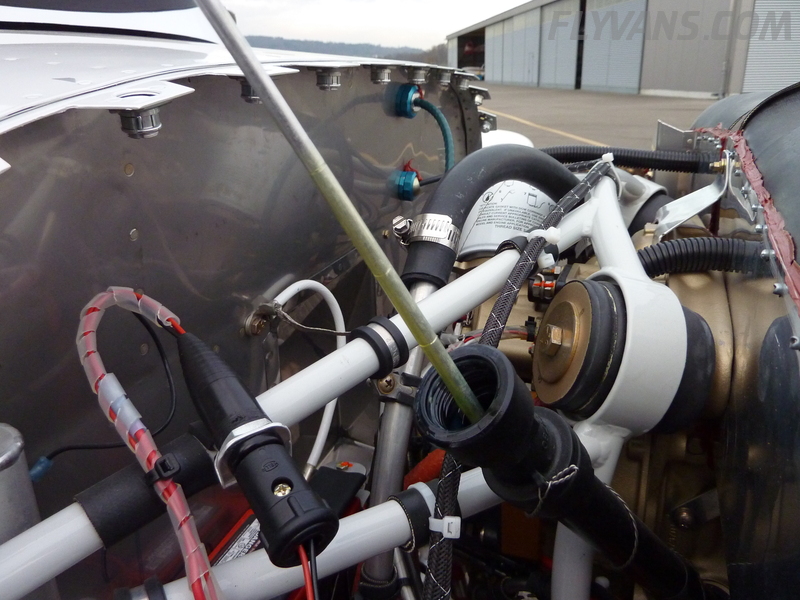I am a firm believer that airplanes with advanced electronic cockpits need to have an easy-to-connect external power jack. If you haven?t dealt with an EFIS yet, you have no real idea how much time you?ll want to spend with power on the vehicle ? training, testing and updating ? while on the ground. Why impose a time constraint due to the size of your battery when all you need is a shop power supply (or a battery charger) and an easy way to connect it? On my -8, I built in a Piper external power jack close to the battery, and I can actually use it to jump start if required.
For the RV-3, I didn?t want to add the weight of a full-up (heavy) jump start jack, so instead, I used a plastic ?AMP? brand, Canon-style plug that handles 12-gauge wire. I had always envisioned having a pig-tail connector inside one of our cheek-cowl storage bins, but since I had a bulkhead connector handy, I figured ?why have something that will bounce around?? the orange cord is built with the mating connector to the airplane jack, and the other end can be connected to whatever source is available. We can use it for power or battery charging as required.


I of course will have a jack cover to protect the pins when the cable isn?t connected.
Paul
For the RV-3, I didn?t want to add the weight of a full-up (heavy) jump start jack, so instead, I used a plastic ?AMP? brand, Canon-style plug that handles 12-gauge wire. I had always envisioned having a pig-tail connector inside one of our cheek-cowl storage bins, but since I had a bulkhead connector handy, I figured ?why have something that will bounce around?? the orange cord is built with the mating connector to the airplane jack, and the other end can be connected to whatever source is available. We can use it for power or battery charging as required.
I of course will have a jack cover to protect the pins when the cable isn?t connected.
Paul





